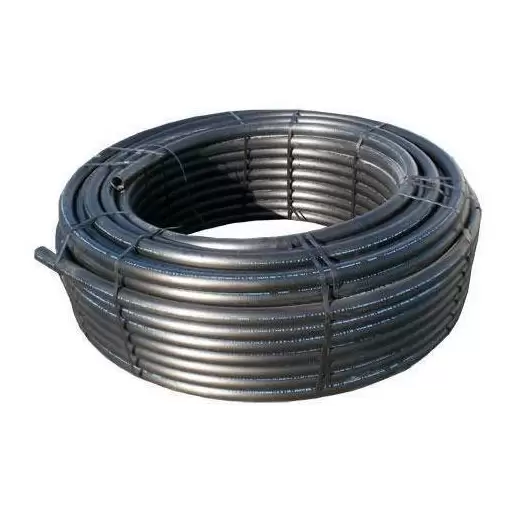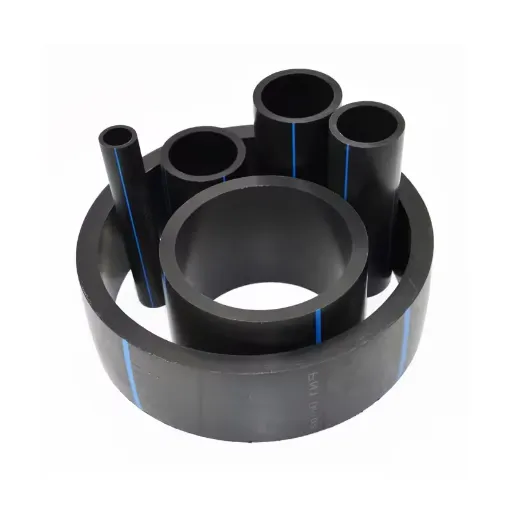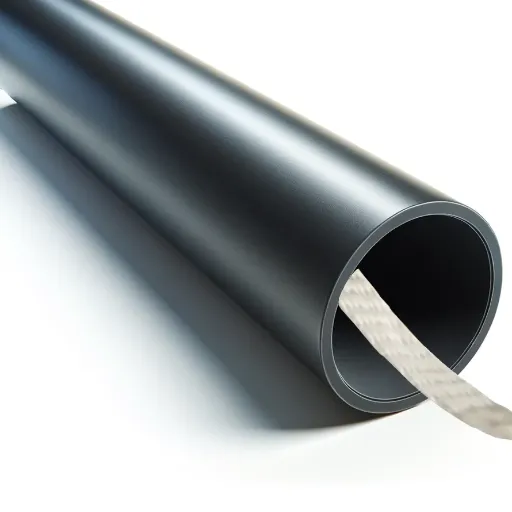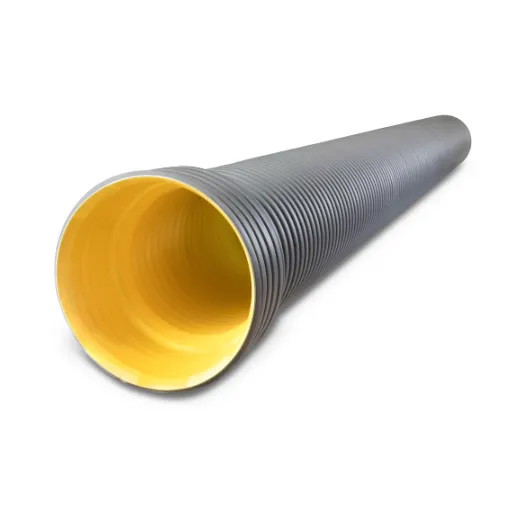High-density polyethylene (HDPE) pipes have revolutionized numerous industries with their durability, flexibility, and cost-effectiveness. Among them, the 1-inch HDPE pipe stands out for its versatile applications across residential, agricultural, and industrial sectors. This article will serve as a comprehensive guide to understanding 1-inch HDPE pipes, covering their technical specifications, practical uses, and essential tips for making informed purchasing decisions. Whether you’re planning a plumbing system, implementing an irrigation solution, or seeking reliable piping for industrial operations, this guide will provide the necessary insights to help you choose the right product for your specific needs.
What are the key specifications of 1-inch HDPE pipe?
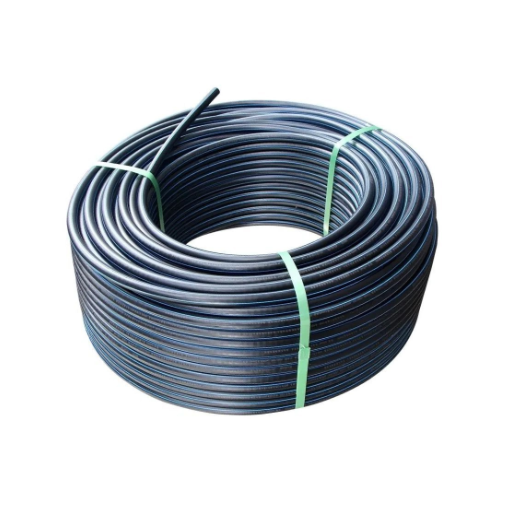
Understanding pressure ratings: 100 PSI vs 200 PSI options
An application’s specific pressure and flow requirements determine whether you go for the 1-inch HDPE pipes rated at 100 PSI or 200 PSI. Each pipe is designed to fail at a specific maximum internal pressure called the pressure rating in the absence of ideal conditions. For example:
Pipes rated at 100 psi can be used with small to moderate irrigation systems or even residential water supply lines, as these applications are always below moderate pressure. These pipes are generally lightweight and easily affordable while being durable enough for light-duty use.
Pipes rated at 200 psi are ideal for high pressure, robust performance applications such as industrial systems, large scale agricultural irrigation, or municipal water pipelines. These pipes need to be strongly resitant to increased pressure which makes them useful in demanding environments.
Incompatible operating conditions such as high temperature changes, high flow velocities, or even incompatible fluids particular to a given system can serve to limit the benefits that these pipes offer. As with other HDPE products, these pipes are flexible, chemically resistant, and offer long service life.
Standard dimensions: ID, OD, and wall thickness
The measurements of HDPE parts must be kept to certain basics to facilitate their joining to diverse parts and systems alongside their operating requirements. The performance, durability, and pressure capacity of pipes are impacted by three important dimensions known as inner diameter (ID), outer diameter (OD), and wall thickness.
- Inner Diameter (ID): ID is dependent on the quantity of liquid the pipe has to pass through and plays an important role in maintaining suitable flow rates about pressure loss.
- Outer Diameter (OD): The diameter does not have to be uniform to standard regulations specified by the scope of standards along with the fittings and connectors coming from municipal systems or industries.
- Wall Thickness: The thickness of the walls is done concerning the outer diameter for fulfilling specific minimum pressure rating values prescribed. That is usually specified in the form of the Standard SDR (Standard Dimension Ratio). For example, a ratio of this measurement of 11 means a pipe of higher wall durability, which is capable of severe pressure applications when compared to 17 SDR.
When designing, set application limits such as the pressure rating in PSI [(pounds per square inch)] or operational range temperatures have to be monitored closely. Such details are controlled by certain criteria which guarantee safety, reliability, and performance of the components in different environments.
Available forms: Coils, rolls, and straight lengths
While determining the correct form – coiled, rolled, or straight lengths – to use, several technological factors should be evaluated to provide the utmost efficiency and security. These factors consist of: The Pressure Rating (PSI): The pipe’s pressure capability is impacted by the wall thickness and SDR (Standard Dimension Ratio). For instance, SDR 11 pipes are more pressurized than SDR 17 pipes, and therefore, they can be used in severe pressure conditions.
- Temperature Ranges: The operating boundaries of the temperature should not exceed the tolerance of the material. Regarding pipes, factors such as thermal expansion and contraction of the pipe with varying temperatures need to be examined.
- Material Strength and Durability: The pipe material should not deform under environmental and mechanical stresses. This includes resistance to corrosion and UV or chemical exposure.
- Transportation and Length Requirements: Coils and rolls can be easily transported and installed into tight, irregular spaces. Straight lengths are ideal for linear installations where no bending is desired.
Making sure that all safety and operation standards are adhered to, these factors are crucial when deciding on the appropriate pipe layout.
How does 1-inch HDPE pipe compare to other pipe materials?
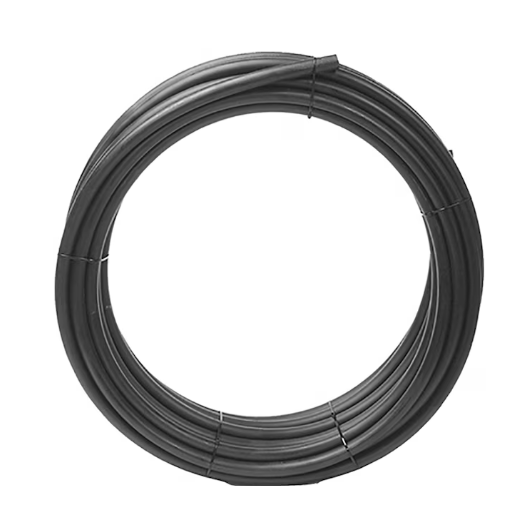
HDPE vs PVC: Which is better for water applications?
In comparisons between HDPE and PVC for water usage, I would lean toward HDPE in most situations because of its increased flexibility, durability, and resistance to environmental impacts. Being able to deform without cracking makes HDPE pipes ideal for high-pressure systems and areas with movement or unstable ground.
- Pressure Rating: Pipes used for PVC plumbing typically have lower ratings of pressure than HDPE. One notable difference of HDPE and PVC is that the maximum pressure of the HDPE pipes depending on the SDR (Standard Dimension Ratio) can get up to 200 PSI while PVC pipes limit to about 150 PSI. It is important to note that the pressure rating of PVC does not tend to go above 150 PSI.
- Flexibility: While HDPE is more flexible and ductile, PVC is not rigid at all. This makes it easy for HDPE to bend without succumbing to multiple failure stresses caused by soil movements and thermal expansion.
- Chemical Resistance: Both materials, HDPE and PVC, have a diverse set of resistant chemicals. HDPE shows better resilience than PVC, especially in more aggressive and UV extreme chemical environments.
- Longevity: Overall, the lifespan of HDPE pipes tends to exceed the HDPE pipes by 10-20 years but is often dependent on environmental conditions, such as mechanical stress.
- Joining and Maintenance: Unlike PVC, where the two pipes mechanically join, HDPE pipes are effortlessly fused without any seams, ensuring there are no leaks.
Although every material has its unique advantage, HDPE stands out among the rest with unmatched durability and efficiency for water usage in tough conditions. However, if budget is a major consideration, it’s reasonable to suggest that PVC could be cheaper for less strenuous uses.
Polyethylene pipe advantages over steel and copper alternatives
Compared with steel and copper pipes, polyethylene pipes have numerous advantages. First, polyethylene pipes are virtually resistant to corrosion, which is not the case with steel, as pipes made from this material tend to rust in wet or humid places. In cases where the pipes are wet or come into contact with corrosive substances, polyethylene becomes a more robust and easy-to-maintain option. Also, polyethylene pipes are much more flexible, which makes it easier to install the pipes on challenging terrains or in cramped spaces, saving time and money on labor costs.
If we consider weight, polyethylene is much lighter than both steel and copper, which makes it easier to transport and handle at the site. When we look at thermal properties, polyethylene can withstand huge temperature changes from 40 °F to 140 °F. These extreme conditions are less likely to damage the pipes compared to copper, which tends to deform or leak when exposed to thermal stress, and steel, which has the potential of becoming brittle at very low temperatures.
One more important benefit is the separation in the pipe’s joints. Unlike steel or copper systems that use mechanical fittings (which are subject to soldering) that can break down over time, High-Density Polyethylene (HDPE) pipes can be joined through heat fusion. As a result, a monolithic system with no leaks at the joints is created. Moreover, polyethylene pipes have exceptional chemical resistance, so they can not only transport water but industrial fluids with aggressive compositions as well.
In summation, polyethylene pipes fusion-welded joints are a quite dependable mechanically and over the long term, while being easy to install, lightweight and resistant to corrosion. These qualities make them the best replacement to steel or copper in numerous engineering usages where environmental impact and cost-effectiveness are vital.
Durability and resistance factors of high-density polyethylene
Due to its molecular structure and physical characteristics, High-Density Polyethylene (HDPE) is super durable and resistant to damage. These characteristics make HDPE a great material for tough applications.
- Chemical Resistance: HDPE has outstanding reticence to accommodate a wide range of chemical processes and reagents: acids, bases, salts, amongst many others. Non-polar molecular structure and HDPE’s native lack of viscosity greatly hampers many aggressive chemicals from interacting with the material. Its usefulness is pronounced in applications where little degradation to the material is required.
- Impact Resistance: HDPE can withstand, without being cracked or broken, a great deal of mechanical shocks and stress. Indeed, it possesses a very high impact strength. For instance, in applications the like of piping systems subjected to aggressive flows or forces externally, HDPE has a hearty Izod impact value, typically above 130 kJ/m².
- UV and Weather Resistance: Basic HDPE generally degrades under UV after a considerable amount of time. However, UV-resistant grades are fortified with additives such as carbon black, assuring UV sonar durability outside. This enables HDPE products to withstand external conditions over decades and maintain structural integrity beyond 20 years.
- Temperature Tolerance: HDPE remains mechanically useful between –40°F(-40°C) to 140°F(60°C), which is ideal for a myriad of extreme climatic conditions as well as industrial applications involving thermal variation.
- Abrasion Resistance: The material exhibits exceptional resistance to wear and abrasion, particularly in the case of moving abrasive slurries or granular materials. The low frictional coefficient of HDPE is about 0.2, which makes it resistant to abrasion.
- Corrosion Resistance: HDPE is not susceptible to corrosion like their metallic counterparts. This means that moisture or aggressive environments do not corrode the material, showing no sign of pitting or flaking. These features greatly reduce maintenance expenditure because no anti-corrosive treatment needs to be applied.
Because of these factors in durability and resistance, HDPE is extremely useful in the infrastructure, chemical processing, and water distribution industries where reliability and longevity are of great importance.
What are the common applications for 1-inch HDPE pipe?
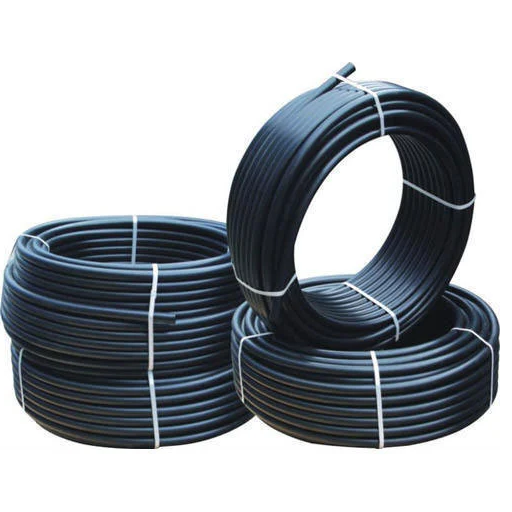
Water supply and irrigation systems
The flexibility, strength, and corrosion resistance of 1-inch HDPE pipes makes them ideal for use in water supply and irrigation systems. These pipes are known to transport water over long distances without suffering too much moisture degradation or damage due to agricultural chemical exposure.
- Pressure Rating: Usually between 100 psi to 200 psi based on the pipe grade, the operational limits of these pipes ensure performance consistency under stress.
- Temperature Resistance: The effective working range is 32°F to 140°F, which applies to many differing climates.
- Longevity: Over fifty years is the average with some standard conditions which vastly increases the time needed between replacements and maintenance.
The cited attributes point toward 1-inch HDPE pipes as a reliable, albeit economical option for irrigation and water system distribution across farms, residential areas, and even gardens.
Agricultural uses and rural water delivery
In agriculture, HDPE pipes are commonly used because they have a long service life, are flexible, and do not get destroyed by corrosion or chemical reactions. These pipes are useful in irrigation systems because they are leak-proof and do not lose a lot of water pressure while transporting water over long distances. With inline sprinkler and drip irrigation systems, the use of 1-inch HDPE pipes in rural areas is very beneficial as these systems require sustained water pressure with little maintenance.
- Pressure Rating: The pipes can withstand pressure of 100 to 160 PSI which is reliable for rural irrigation system needs.
- Flexibility: HDPE pipes are very flexible, with an elongation at a break greater than 500%. They can endure the movement of soil or a little bit of seismic activity without breaking.
- UV Resistance: Prevents material degradation due to sun exposure, allowing these pipes higher durability in the field.
- Temperature Range: These pipes Our effective and functional from a temperature range of 32°F to 140°F, these pipes work well in a wide range of climates typical to rural areas.
Considering all these elements of flexibility, service life over 50 years, low cost and high adaptability, makes HDPE pipes a dominant component of rural water delivery and agricultural water management systems.
Residential plumbing applications
Because of their strength, flexibility, and non-corrosive nature, HDPE pipes are commonly used in the residential sector. Since they can easily endure hot or cold water temperatures ranging from 0-60 °C, they are perfect for pipe systems. Moreover, their high impact resistance guarantees reliability over time, mechanically or with soil movement.
- Pressure Rating: HDPE pipes, on average, have a pressure rating of SDR 11- SDR 17, depending on the flow and design specifications.
- Flexibility: Their bending radius usually is 20-25 times the diameter of the pipe, making it easier to install in cramped or complicated locations.
- Longevity: They require minimal maintenance for residential use as their life expectancy is over 50 years on average.
- Chemical Resistance: High-density polyethylene has non leaky and non intrusive qualities, making it sutible for water HDPE pipes.
These provide rational plumbing installations, as to why plumbing specialists prefer using HDPE pipes for residential buildings.
How do I properly install 1-inch HDPE pipe?
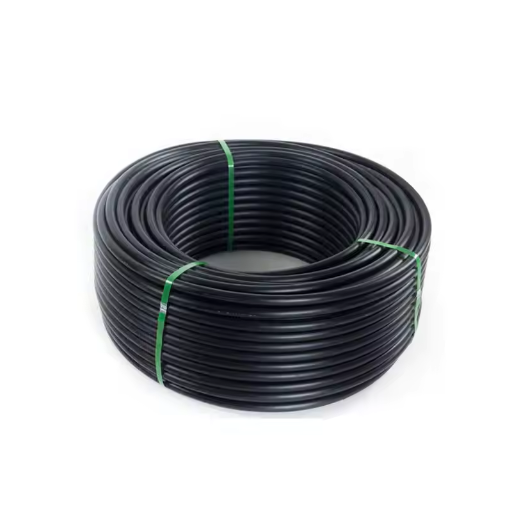
Connection methods: Fusion fitting vs mechanical fittings
Mechanical and fusion fittings are two methods employed to join 1-inch High Density Polyethylene (HDPE) pipes.
Fusion Fittings:
In this method, the ends of the pipe are heated and then fused, which results in a strong and solid joint. For this technique, specific tools like butt fusion machines and electrofusion couplers are required.
- Operating Temperature: This process is generally effective at 200°F-260°F and for the heating elements, it is 200°F-260°F.
- Pressure Rating: This is referred to as the pipes performance rating which usually falls between 100-200 PSI depending on the SDR (Standard Dimension Ratio).
- Installation Longevity: Fusion joints are permanent. They do not depreciate over time, thus reducing the chances of the joint leaking.
Mechanical Fittings:
Wound or compression connectors are used to join two pipes without the need for heating in this method. This method provides a more versatile option in the case of temporary fittings.
- Pressure Rating: This procedure works with pipes that are rated up to 150 PSI.
- Ease of Assembly/Disassembly: These fittings tend to be easier to install, thus are good for places in which adjustments need to be done regularly.
- Material Compatibility: These connectors are generally made with plastic, brass, and stainless steel, which allows them to withstand different chemicals and not loosen easily.
Both options are dependable, however, fusion fitting is more advantageous for permanent installations because there are no leaks and it is much stronger. Mechanical fittings, however, are flexible and better for temporary setups or places that need to be maintained frequently.
Proper installation techniques for underground applications
To ensure maximum efficiency and durability when installing 1-inch HDPE pipes underground, it’s important to consider proper techniques. The first step is careful excavation; trenches must be carved out at an appropriate depth, usually 12-24 inches beneath the frost line for HDPE installation. This depth will vary based on regional standards. The bottom of the trench should be smooth, with a layer of compacted sand or fine soil about 4-6 inches thick to protect the pipe from damage.
After preparing the trench, the HDPE pipe must be placed into position with as few bends as possible—standard bend radii is about 25 times the outside diameter of the pipe, making it 25 inches for 1-inch HDPE pipe. Fusion and mechanical fittings enable versatile connections to be made depending on the application’s requirements.
With fusion fittings like butt fusion or electrofusion, both ends of the pipe must be clean and properly aligned. This allows for creating a joint that is completely leak-proof and holds up under pressure and chemicals. Machanical fittings can be made reliable with the appropriate connectors and fastened to factory settings.
When the pipe is connected, fine granular material devoid of sharp debris should be placed in the 12 inches area above the pipe and backfilling should be done incrementally. The material should be gently compacted to allow for stable support around the pipe without deforming it. Following these steps assures the effectiveness of an underground HDPE pipe installation.
What should I consider when purchasing 1-inch HDPE pipe?

Price comparison: Coil vs straight lengths
In my view, whether coiled length or straight length is more appropriate for a one-inch HDPE pipe depends on the scope of work involved. In general, for long pipeline installations, coils are more economical due to reduced material and transportation costs because they are easier to handle as they are compactly wound. However, they can pose problems during installation, such as the need for facilities to remove the coils and the possibility of not being able to achieve straight runs.
Equally, straight portions tend to be more expensive to transport and store since they require a bigger footprint. Straight portions, however, allow for easier alignment and installation, especially where linear runs of pipes are short, and are therefore preferable in solder installations.
- Standard coil lengths: normally from 100 to 500 feet in length, more economical for long continuous runs with fewer joints.
- Straight lengths: portions delivered as 20 or 40 foot sections are easy to manage for small installations or localized repairs.
- Jointing: The coiling reduces the number of joints, thus reducing potential weak points in the system.
- Flexibility radius: coils are much more flexible, which is advantageous for uneven ground with bends.
- Installation Costs: As for the installation costs, the labor cost may be lower for straight pipes because they are easier to align and simpler to install for linear applications.
In the end, the choice of coils or straight lengths will depend on the specifications of the application, such as the length of the pipeline, the nature of the land, and how accurate the alignment needs to be.
Calculating the required pipe size for your specific application
To determine the appropriate pipe sizing for your system, I advise starting with a thorough evaluation of the system’s operational requirements. Key factors to consider include:
- Flow Rate (Q): Establish the volumetric flow rate required, usually in gallons per minute (GPM) or liters per second (L/s). It is the total amount of fluid that should be conveyed within a period.
- Fluid Properties: Recognize the fluid’s traits, such as viscosity, density, and temperature. These values influence the friction loss experienced in the pipe.
- Pipe Material and Roughness (ε): Surface roughness is influenced by the material of the pipe. For instance, PVC pipes are less rough than steel ones influencing the friction factor.
- Аllowable Pressure Drop (ΔP): Determine the pressure loss permitted along a section of the pipeline. A certain amount of pressure loss will need more pumping power, which influences operational costs.
- Pipe Length and Elevation Changes: Consider the total length of pipes and their elevation angle since they correspond to head loss.
- Reynolds Number (Re): Find out the Reynolds Number in order to determine if flow will be laminar or turbulent. Turbulent conditions in the system imply the need for bigger pipes in order to reduce pressure loss.
With these considerations in mind, the selection of pipe diameter can be performed using either the Darcy-Weisbach Equation depending on specific system requirements. Correctly balancing these factors enables optimal pipe selection in regards to economical and operational needs.
Shipping considerations for large coils and delivery options
The carriage of large coils must be done with care due to the many considerations involved with transport and delivery. To begin, the coil measurements and its weight need to be captured accurately since these factors affect transportation. For instance, if coils are larger than the required freight size, flatbed trucks or specially made trailers that can transport heavy loads would be necessary.
- Weight Distribution: Check that the total weight of the coils does not exceed the vehicle’s load capacity and that they are evenly distributed to avoid instability during transport.
- Coil Diameter and Width: These parameters define the shipping container’s capacity and control the positioning of the coils to avoid unintended consequences.
- Securing Mechanisms: Shipping container, heavy-duty straps, cradles, or banding are some of the securing mechanisms that should be able to immobilize the coils in transit.
In addition, the delivery route must be analyzed for the possible hindrances like bridge weight limits or height clearances for oversized shipments. Concerns about time deadlines would mean paying for expedited shipping or just in time delivery which would be very costly due to their convenience.
Reference sources
Frequently Asked Questions (FAQs)
Q: What are the key specifications of a 1-inch HDPE pipe product?
A: A 1-inch HDPE pipe typically has a nominal diameter of 1 inch with an actual outside diameter of 1.315 inches for IPS (Iron Pipe Size) standards. These pipes are usually made from PE4710 or PE3608 resin, with pressure ratings ranging from 100-200 PSI depending on the SDR (Standard Dimension Ratio). The inside diameter varies based on wall thickness. Most 1-inch HDPE water pipe has NSF-61 approval for potable water applications and come in black with blue stripes to indicate drinking water use. The pipe’s flexibility, chemical resistance, and long service life (50+ years) make it popular for various applications.
Q: How does 1-inch HDPE pipe relate to other pipe materials?
A: 1 inch HDPE pipe relates favorably to other materials in several ways. Compared to PVC, HDPE offers greater flexibility, impact resistance and performs better in freezing conditions. Unlike metal pipes, HDPE won’t corrode, rust, or develop scale buildup on the inside. It’s lighter than copper or steel, making installation easier. HDPE also has lower friction coefficients than many other pipe materials, allowing for better flow rates. While perhaps more expensive than some alternatives initially, the longer lifespan and reduced maintenance needs typically result in lower lifetime costs, making it a cost-effective solution for water systems, gas lines, and many other applications.
Q: What information should I look for in a product description when buying HDPE pipe?
A: A comprehensive product description for HDPE pipe should include the resin type (PE4710 is premium grade), pressure rating (PSI), SDR or DR value (which indicates wall thickness), compliance certifications (NSF/ANSI 61 for drinking water), and dimension standard (IPS or CTS). Look for details about the pipe’s applications, working temperature range, and whether it’s UV-stabilized for outdoor use. The description should also specify if it’s a water pipe meant for potable use, color coding (often black with blue stripes for drinking water), available lengths, connection methods, and warranty information. Some sellers may include technical specifications like tensile strength and chemical resistance. Always verify that the inside and outside diameters match your project requirements.
Q: How is 1-inch HDPE pipe used in agriculture?
A: In agriculture, 1-inch HDPE pipe is extensively used for irrigation systems, particularly drip irrigation and micro-sprinklers, where its flexibility allows for easy installation across uneven terrain. Farmers use this size for lateral lines in irrigation networks, connecting to main supply lines and delivering water to individual rows or sections. The pipe’s resistance to UV degradation makes it ideal for above-ground applications, while its chemical resistance handles fertilizer injection systems well. Many agricultural systems use quick-connect fittings with this pipe for temporary setups. Beyond irrigation, 1-inch HDPE is used for livestock watering systems, small-scale drainage solutions, and greenhouse applications. Its durability against temperature fluctuations makes it suitable for seasonal use, and being lightweight, it can be moved or reconfigured as crops rotate or field layouts change.
Q: What technical considerations are important when installing 1-inch HDPE pipe?
A: When installing 1-inch HDPE pipe, several technical factors must be addressed. First, ensure proper expansion allowance (approximately 1 inch per 100 feet) due to HDPE’s high thermal expansion coefficient. Butt fusion or electrofusion is preferred for permanent connections to maintain pressure integrity, though mechanical fittings with proper stiffeners can work for lower-pressure applications. The pipe requires proper bedding and backfilling with materials free from sharp objects. Maintain minimum bend radius specifications (typically 25 times the pipe diameter for cold bending) to prevent kinking. For underground installations, trench depth should account for local frost lines and traffic loading. Pressure testing at 1.5 times the working pressure is recommended before commissioning. When transitioning to other materials, use appropriate transition fittings to prevent leaks. In cold weather installations, allow additional time for the pipe to warm and become more flexible. HDPE pipe can be installed via directional drilling or pipe-bursting methods when trenching isn’t feasible.
Q: What’s the difference between 1-inch HDPE pipe, tubing, and hose?
A: The terms pipe, tubing, and hose are often used interchangeably but have distinct differences. HDPE pipe is rigid with standardized dimensions (typically following IPS standards) and is pressure-rated for water distribution. It’s measured by nominal size, with a 1-inch pipe having an actual outside diameter of 1.315 inches. HDPE tubing is generally more flexible than pipe and is often sized by actual outside diameter rather than nominal measurements. It’s frequently used in lower-pressure applications and may have thinner walls. Hose, by contrast, is highly flexible, often reinforced with fabric or other materials, and designed for temporary connections rather than permanent installations. Unlike a pipe, a hose typically connects with clamps or quick-connect fittings rather than fusion or mechanical joints. For permanent water systems, HDPE pipe is preferred for its pressure handling, while tubing might be selected for more flexible applications and hose for temporary or movable connections. When ordering, verify if the product is pipe, tubing, or hose since the terms are sometimes misused.



